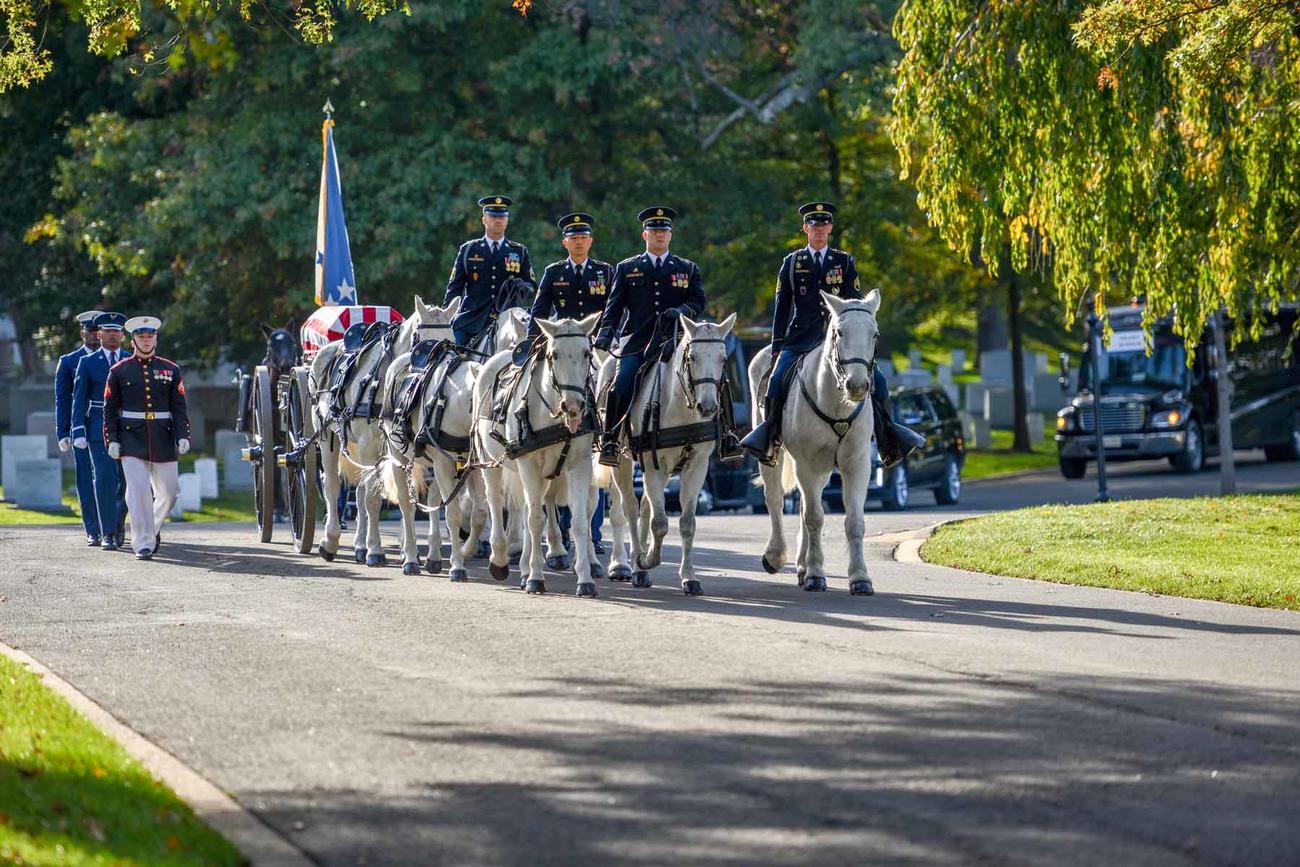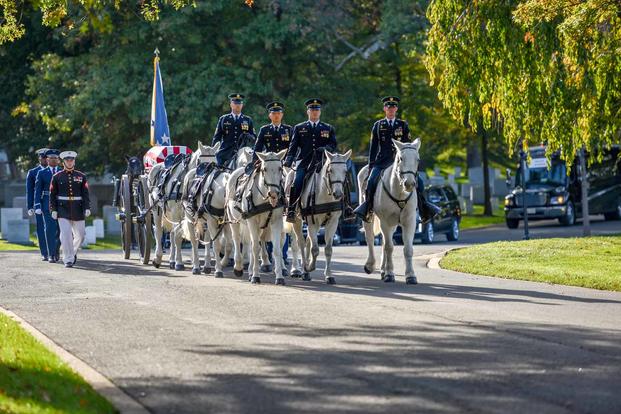

An Alabama senator says the Army hasn’t done enough to improve the conditions of the horses in the service’s Old Guard Caisson Platoon following the death of two of the animals within four days and reports of mistreatment.
Sen. Tommy Tuberville, a Republican, said his staff discovered during a visit last month that a lack of space and proper sanitation continues to be a problem for the horses, which escort the caskets of fallen service members and veterans to plots in Arlington National Cemetery.
The Army said it has spent almost $2.5 million since March on improvements for the 60 horses it keeps at Fort Myer–Henderson Hall and Fort Belvoir, Virginia, but is still looking to “implement solutions” for expanding the lots and pastures. CNN reported in April that the horses were living in tiny lots filled with detritus, eating low-quality hay and were inundated with parasites.
Read Next: Another Military Aircraft Crashes in Southern California, the Third in a Week
“It’s a sacred duty; it’s a no-fail mission,” said Tuberville, who is a member of the Senate Armed Services Committee. “We’ve got to do better for young men and women performing these burials. They deserve a lot better. The horses, obviously, deserve a lot better.”
Tuberville told Military.com that his staff toured the Old Guard facilities on May 20, three months after veterinarians with the Army’s Public Health Command-Atlantic inspected the caisson area following the deaths of the two horses. One of those horses was later found to have 44 pounds of gravel in its gut. The Army inspection said that the unit had earned 18 “unsatisfactory” inspections since 2019.
The senator asked the Army for a better plan to make improvements after the service sent one that “wasn’t acceptable to me,” he said, adding that the most important issue, in his view, is the lack of space for the horses in the lots and pastures.
“It’s lipstick on a pig,” Tuberville said about the Army’s plan. “You got to have more room.” He added that the turnout area is “filthy,” and “manure next to the highway is flushing out into the streets when it rains.”
An Army spokesperson said the facility’s lower lot, which was one of the main culprits of detritus and lack of sanitation, was closed in January, and that the unit immediately made a number of the changes recommended by the Army inspection.
Some of the changes included purchasing hay quality testing, “procurement of better quality hay” and feed, said Col. Junel R. Jeffrey, the public affairs director for the U.S. Army Military District of Washington, the commanding unit responsible for the Old Guard, as well as Fort Myer and Fort Belvoir. The Old Guard spent nearly $2.5 million on improvements such as new mats, feed contract modifications and testing, and new horse procurement since March, with $2.2 million of that dedicated to improving lots and stables.
“This new higher-quality diet has also produced better ingestion amongst the horses, as they now eat more of the hay instead of allowing it to fall onto the mat,” she said.
The ailment that killed at least one of the horses — Tony — was intestinal impaction caused by 44 pounds of sediment in his colon, which can happen when horses “lip” debris off bare ground as they eat hay that has fallen from feeders.
“All lots currently in use on [Fort Myer-Henderson Hall] have been cleared of gravel and standing water, and have mats emplaced under the feeders,” Jeffrey said. “To date, 507 feeder mats have been installed at Joint Base Myer-Henderson Hall; 1,036 mats have been received at Fort Belvoir and are currently in the process of being installed with an estimated date of completion of 13 June.”
A picture sent to Military.com from Tuberville’s office showed mats under feeders in one of the lots.
Jeffrey also said that four of the older animals — about half of the unit’s horses are over 20 years old and considered geriatric — have been adopted out in an effort to reduce the size of the herd.
Despite the changes, Tuberville, who says he is working with members of both parties on the Senate Armed Services Committee on the issue, says that he is still concerned about space.
“The young men and women that keep these horses, they don’t have near enough room for these horses to live in a sanitary position,” he said. “We’ve got to call upon the Army to step up and make a decision on some of the land that they’re not using properly or used at all — old tennis courts, commissary — anything where they can get creative to make this happen.”
The Old Guard said that it has identified areas that need to be expanded and is working with Installation Management Command and the U.S. Army Corps of Engineers, but did not include a specific timeline or where that additional land would come from.
“We’re in the process of looking into just that,” Jeffrey said. “We’re exploring, but it’s too early to say.”
The Caisson platoon has 60 horses in its herd that reside primarily at Fort Myer-Henderson Hall, but also occupy a six-acre pasture at Fort Belvoir, Virginia. The February Army report said that “even at one acre per horse, the current acreage constitutes only 18.8% of the recommended area for equine use,” adding that senior leader turnover and lack of funding were primary issues stalling improvement progress.
Tuberville said that the Senate Armed Services Committee may include funding for improvements in the annual National Defense Authorization Act. The committee is in the process of drafting the mammoth piece of legislation.
“We’re gonna mark it up next week,” he said. “It’ll be very, very small compared to everything else that we’re doing in NDAA, but this is something I don’t think we can overlook much longer because it’s horrific.”
— Drew F. Lawrence can be reached at [email protected]. Follow him on Twitter @df_lawrence.
Related: Old Guard Caisson Horses Earn Retirement
© Copyright 2022 Military.com. All rights reserved. This material may not be published, broadcast, rewritten or redistributed.
